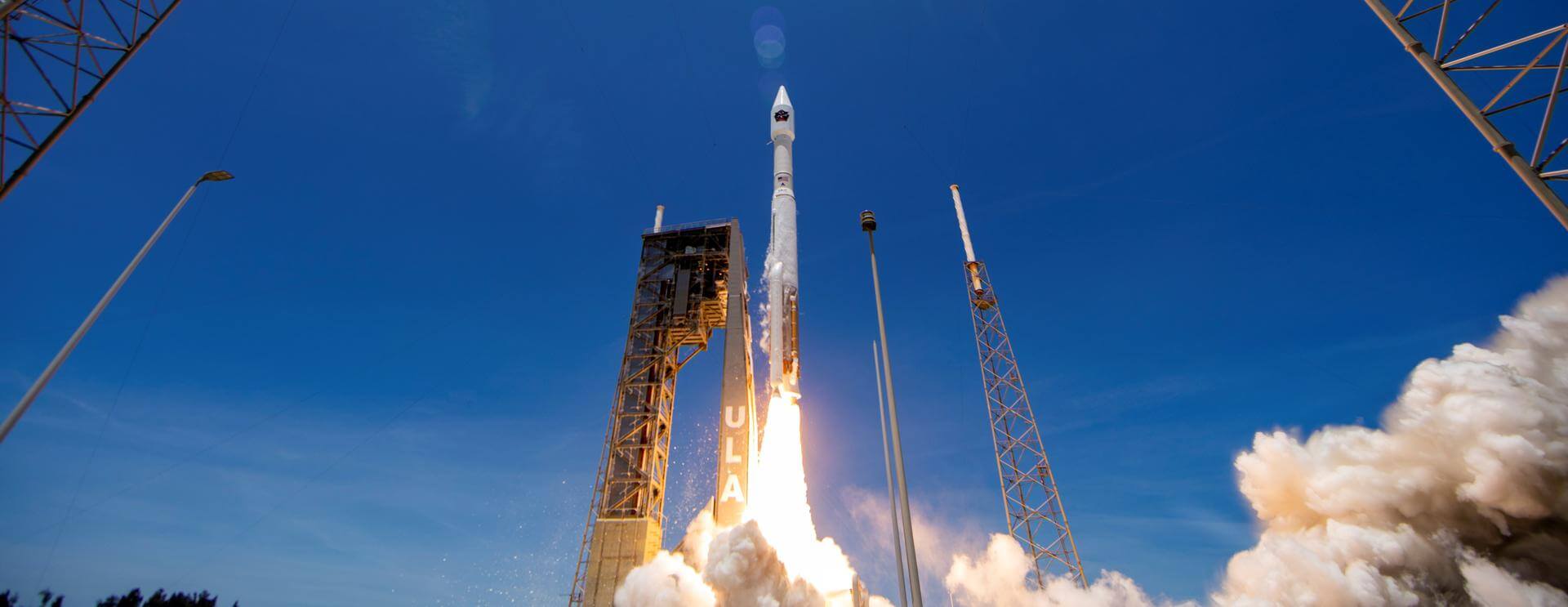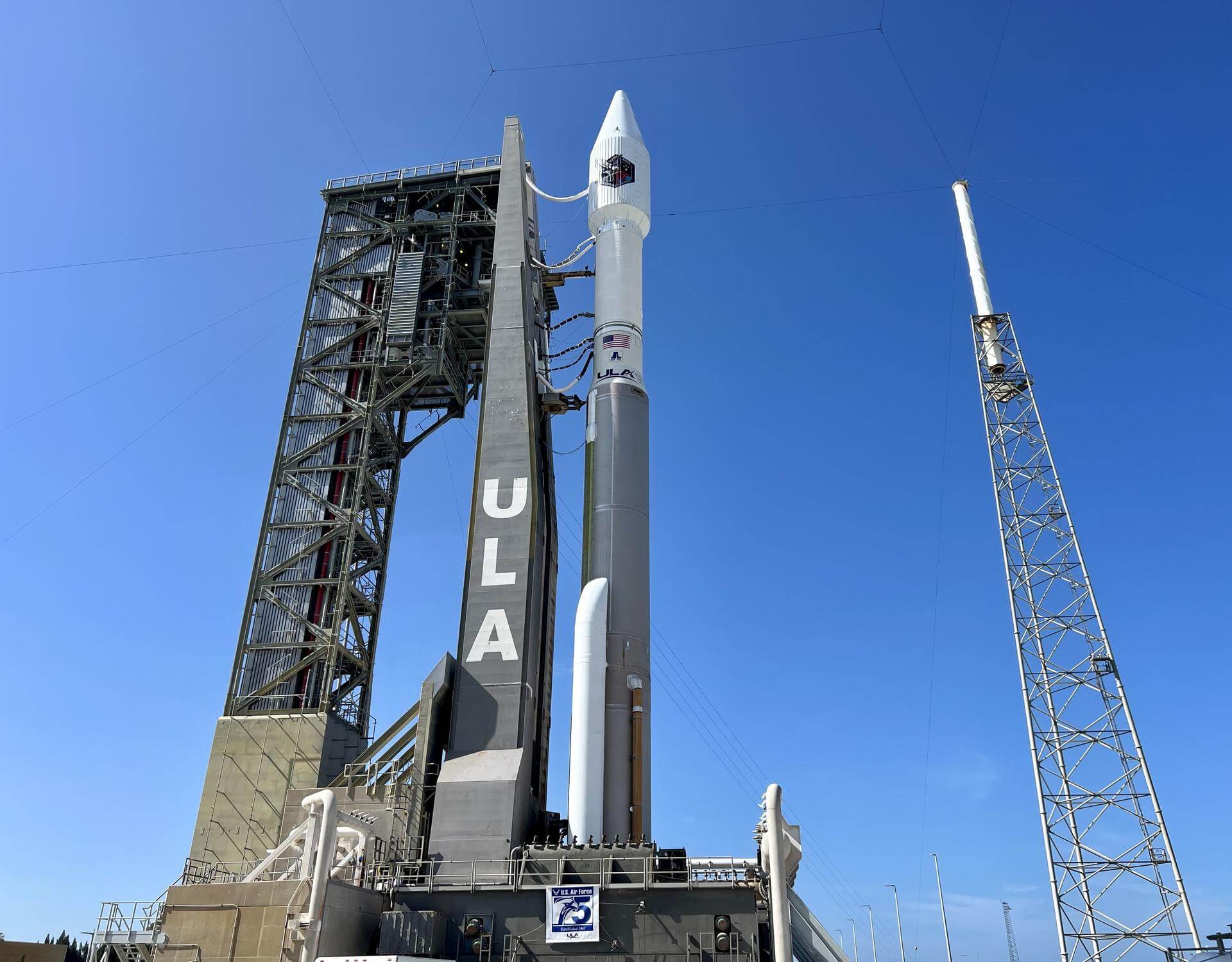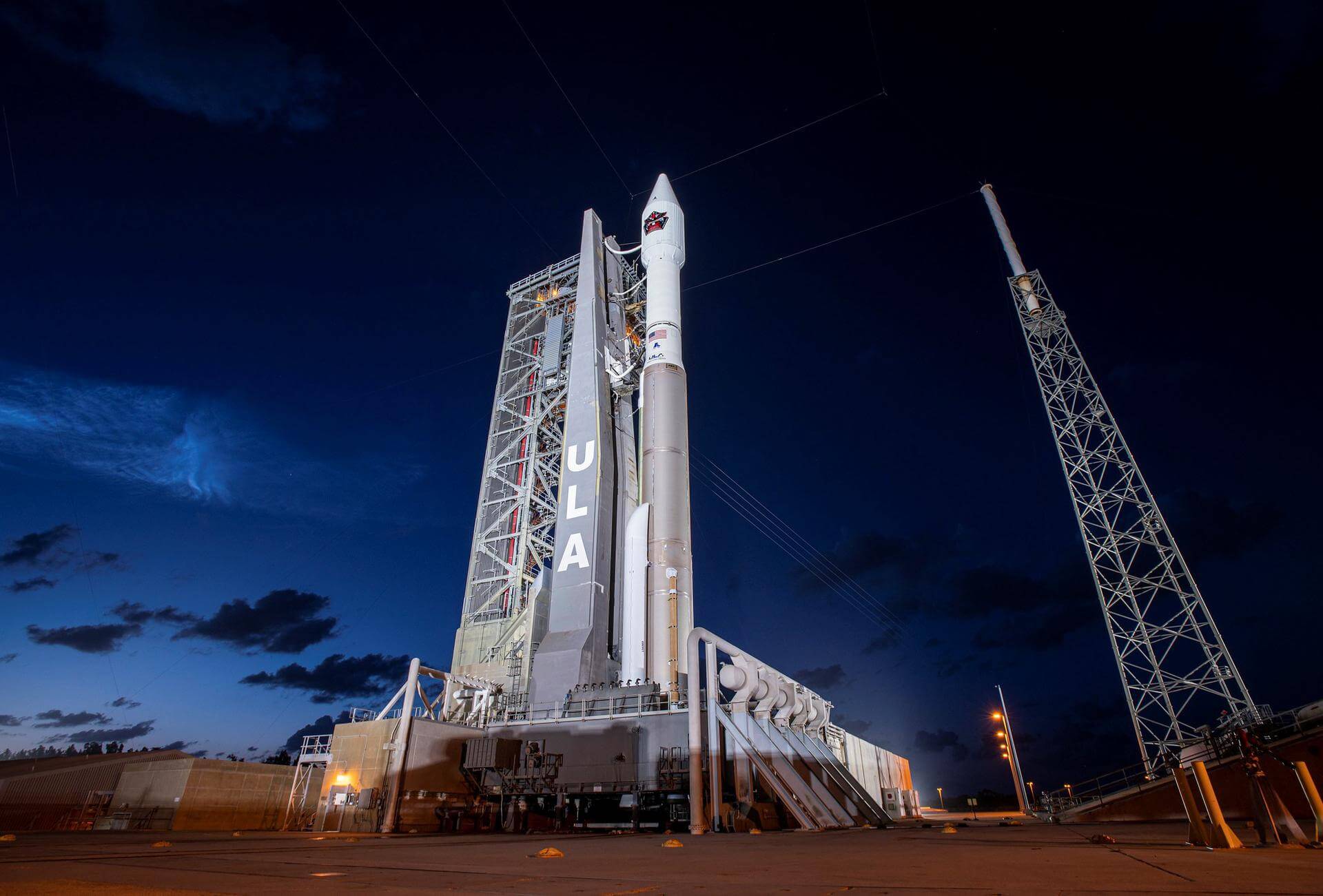
Atlas V 421
ActiveUnited Launch Alliance (ULA)
Oct. 11, 2007
Description
Atlas V is an expendable launch system in the Atlas rocket family. It was formerly operated by Lockheed Martin and is now operated by United Launch Alliance (ULA), a joint venture with Boeing. Each Atlas V rocket uses a Russian-built RD-180 engine burning kerosene and liquid oxygen to power its first stage and an American-built RL10 engine burning liquid hydrogen and liquid oxygen to power its Centaur upper stage. The RD-180 engines are provided by RD Amross, while Aerojet Rocketdyne provides both the RL10 engines and the strap-on boosters used in some configurations. The 421 version uses a 4m wide fairing, 2 solid rocket boosters and one engine on the Centaur stage.
Specifications
-
Max Stage
2 -
Length
58.3 m -
Diameter
3.8 m -
Fairing Diameter
― -
Launch Mass
433.0 T -
Thrust
― -
Apogee (Sub-Orbital)
40000.0 km
Family
-
Name
Atlas V 421 -
Family
― -
Variant
421 -
Alias
― -
Full Name
Atlas V 421
Payload Capacity
-
Launch Cost
$123000000 -
Low Earth Orbit
14067.0 kg -
Geostationary Transfer
Orbit
6890.0 kg -
Direct Geostationary
― -
Sun-Synchronous Capacity
―
United Launch Alliance
Commercial
Interim CEO: John Elbon
ULA 2006United Launch Alliance (ULA) is a joint venture of Lockheed Martin Space Systems and Boeing Defense, Space & Security. ULA was formed in December 2006 by combining the teams at these companies which provide spacecraft launch services to the government of the United States. ULA launches from both coasts of the US. They launch their Atlas V vehicle from LC-41 in Cape Canaveral and LC-3E at Vandeberg. Their Delta IV launches from LC-37 at Cape Canaveral and LC-6 at Vandenberg.
Atlas V 421 | SBIRS GEO-6
United Launch Alliance | United States of AmericaCape Canaveral SFS, FL, USA
Aug. 4, 2022, 10:29 a.m.
Status: Launch Successful
Mission:
Sixth geosynchronous satellite of the Space Based Infrared System program (SBIRS), providing capabilities for early missile warning and missile defense. SBIRS GEO-6 is the second satellite using Lockheed Martin's LM2100 combat bus.
Geostationary Transfer OrbitAtlas V 421 | SBIRS GEO-5
United Launch Alliance | United States of AmericaCape Canaveral SFS, FL, USA
May 18, 2021, 5:37 p.m.
Status: Launch Successful
Mission:
Fifth geosynchronous satellite of the Space Based Infrared System program (SBIRS), providing capabilities for early missile warning and missile defense. SBIRS GEO-5 is the first satellite using Lockheed Martin's LM2100 combat bus.
Geostationary Transfer OrbitAtlas V 421 | NROL-52
United Launch Alliance | United States of AmericaCape Canaveral SFS, FL, USA
Oct. 15, 2017, 7:28 a.m.
Atlas V 421 | NROL-61
United Launch Alliance | United States of AmericaCape Canaveral SFS, FL, USA
July 28, 2016, 12:37 p.m.
Atlas V 421 | Mexsat-2 (Morelos III)
United Launch Alliance | United States of AmericaCape Canaveral SFS, FL, USA
Oct. 2, 2015, 10:28 a.m.
Atlas V 421 | MMS
United Launch Alliance | United States of AmericaCape Canaveral SFS, FL, USA
March 13, 2015, 2:44 a.m.
Atlas V 421 | WGS-2
United Launch Alliance | United States of AmericaCape Canaveral SFS, FL, USA
April 4, 2009, 12:31 a.m.
Atlas V 421 | ICO G1
United Launch Alliance | United States of AmericaCape Canaveral SFS, FL, USA
April 14, 2008, 8:12 p.m.
Atlas V 421 | WGS-1
United Launch Alliance | United States of AmericaCape Canaveral SFS, FL, USA
Oct. 11, 2007, 12:22 a.m.
Falcon 9
Starlink Group 6-97
Space Launch Complex 40 - Cape Canaveral SFS, FL, USAA batch of 29 satellites for the Starlink mega-constellation - SpaceX's project for space-based Internet communication system.
PSLV-DL
EOS-N1 and others
Satish Dhawan Space Centre First Launch Pad - Satish Dhawan Space Centre, IndiaSmall Earth observation satellite from NewSpace India Limited (NSIL) for an "Indian strategic user", details TBD. This launch will also carry 18 o…
Falcon 9
Pandora / Twilight rideshare mission
Space Launch Complex 4E - Vandenberg SFB, CA, USAThe Pandora small satellite was selected in 2021 as an inaugural mission in NASA’s Astrophysics Pioneers Program. It includes a 0.45-meter telescope …
Falcon 9
Starlink Group 6-96
Space Launch Complex 40 - Cape Canaveral SFS, FL, USAA batch of 29 satellites for the Starlink mega-constellation - SpaceX's project for space-based Internet communication system.
Falcon 9
Starlink Group 6-88
Space Launch Complex 40 - Cape Canaveral SFS, FL, USAA batch of 29 satellites for the Starlink mega-constellation - SpaceX's project for space-based Internet communication system.



